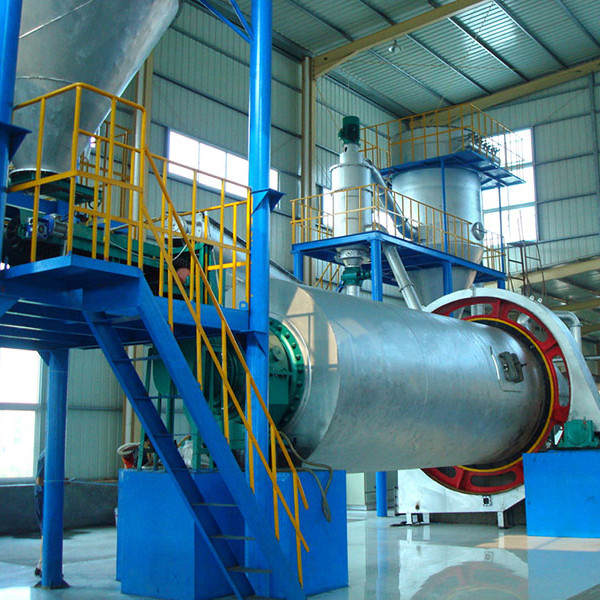
Ultrafine quartz powder is a high-quality neutral inorganic filler, due to its strong acid resistance, stable physical and chemical properties, good light transmittance, high dielectric, high humidity resistance, radiation resistance, excellent high temperature resistance and high Purity, low ion content, low expansion, low stress and other properties, widely used in plastics, rubber, paints, coatings, ceramics, inks and catalytic and gas filter materials and other fields. Moreover, ultrafine quartz powder is also a functional material, and its combination with new functional materials has shown broad application prospects, so the development of ultrafine quartz powder has practical significance.
The preparation of ultra-fine quartz powder requires the use of various mechanical equipment, including: ball mills, vibrating mills, stirring mills, jet mills, high-speed impact mills, colloid mills, etc., and fine grading equipment as supporting equipment. Among them, the high-energy ball milling method requires less equipment and simple process to prepare ultra-fine quartz powder, but there are many factors that affect the composition and performance of the final product. The main factors are raw material properties, milling intensity, milling environment, milling atmosphere, material-to-ball ratio, milling time and milling temperature.
The composition of the material system and the ratio of each component are the material basis for determining the composition of the final product. Different raw material compositions and component ratios will result in different ball milling products even under the same ball milling conditions.
There are usually two grinding methods for inorganic non-metallic grinding: dry method and wet method. The dry method is easy to operate, and the wet method can often obtain smaller particle size of the grinding product. However, the phase change time of wet grinding is much longer than that of dry grinding. This is because the friction coefficient of wet grinding is small, and the interfacial energy of particles in water is smaller than the surface energy in air, so it is difficult for powder particles to accumulate enough energy to overcome the activation barrier required for the phase transition. However, when the dry grinding reaches a certain level, the occurrence of phase change is almost inevitable. Mechanical energy-induced changes in the internal structure of materials usually require particle (grain) size and free energy to reach the limit value, while in the wet grinding environment, the dissolution and “reconstruction” of the fractured surface, good lubrication and cooling environment are all hindered. The particle size and free energy reach a limit value, which hinders the occurrence of polycrystalline transformation.
The length of ball milling time directly affects the composition and purity of the milled product. The MA amorphization and crystal transformation of some metals or alloys can only be carried out within a certain time range. When the grinding time is too short, the internal energy accumulation of the material is too small to destroy its binding valence bonds; the grinding time is too long , and other chemical changes may occur. For the mechanochemical synthesis of inorganic non-metallic materials, ball milling for a long time is usually required.
Grinding aids are chemical substances that can significantly improve crushing efficiency and reduce energy consumption during the powder preparation process, mainly surfactants, dispersants, etc. Adding a small amount of grinding aid during the ball milling process can improve the ball milling efficiency.
During the grinding process, due to the friction and impact of the ball mill on the powder, the temperature of the powder will rise, and the local temperature rise is conducive to the solid phase reaction, but the rise of the overall temperature will aggravate the agglomeration of materials and their interaction with the ball and the cylinder wall. Adhesion, when grinding some organic matter, the temperature is too high will lead to its decomposition and so on. It is generally believed that the temperature rise of the powder during grinding should not exceed 350K.
